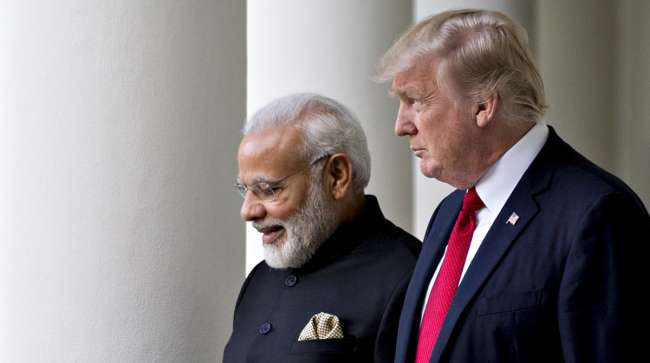Unfolding Talks Between India and the U.S.
The dance of diplomacy between India and the United States on trade matters continues to keep the world watching. Recently, indications surfaced that India might be willing to slash tariffs on U.S. goods, stirring conversation amid what some described as a formal stalemate in negotiations.
Tariff Reduction: A Surprising Proposal?
It was reported that India extended an offer to bring tariffs on American products down to zero. This gesture, though not pinpointed to an exact timeline, was seen as a signal for renewed hope amid chilly trade relations. Comments from U.S. leadership suggested this offer should have come years ago, emphasizing a sense of urgency in the current climate.
India’s Position and Ongoing Dialogue
While India hasn’t officially confirmed these tariff cut offers, key commerce officials acknowledge ongoing conversations. These talks aim to pave the way for a bilateral trade agreement, maintaining a continuous channel for communication even in the absence of formal negotiation rounds.
Why Have Formal Talks Stalled?
The absence of formal negotiations followed the cancellation of a U.S. trade mission’s planned visit to India. Yet, behind the scenes, informal exchanges appear to keep the dialogue alive. This “slow dance” reveals that neither side is ready to slam the door shut on potential agreements just yet.
Context Behind the Trade Tensions
The relationship between India and the U.S. in trade has been a roller coaster, with tariff impositions on both sides underscoring tensions. For example, steep tariffs were placed on Indian exports to the U.S. as a response to barriers India had established, alongside political concerns related to global oil purchases.
Key Disagreements: Agriculture and Dairy Sectors
Among the thorny issues slowing progress have been India’s reluctance to open its dairy and agricultural markets fully. These sectors hold significant cultural and economic value domestically, making concessions challenging. The U.S., meanwhile, has expressed frustration over limited market access, which complicates the path to consensus.
Initial Indian Concessions
Earlier in the discussions, India had proposed reducing tariffs on certain industrial goods, including auto components and pharmaceuticals, especially if the U.S. reciprocated. But as negotiations stalled, momentum was lost, and tentative offers gave way to tariff threats rather than trade bridges.
| Sektör | India’s Tariff Stand | U.S. Position | Negotiation Status |
|---|---|---|---|
| Dairy & Agriculture | Protective, reluctant to open | Seeks greater access | Major sticking point |
| Industrial Goods (Auto, Pharma) | Proposed zero tariffs with reciprocity | Open to negotiation | Unresolved |
| Tariffs on Exports | Faced U.S. 50% duties | Imposed to punish trade barriers | Ongoing tension |
Implications for Global Logistics and Trade
Trade talks of this scale, especially involving tariffs, ripple far beyond bilateral concerns. Changes in tariff rates can have a domino effect on shipping routes, freight costs, and international supply chains. For logistics providers, when tariffs come down, it typically encourages a surge in shipments as cross-border trade becomes more profitable.
On the flip side, tariffs can act like speed bumps on the freight highway, increasing costs and delaying deliveries. This dynamic is a reminder of how closely tied trade negotiations are to the day-to-day realities of cargo movement, haulage, and freight forwarding worldwide.
What’s Next for Logistics Players?
If India moves forward with tariff reductions, industries across sectors – from pharmaceuticals to automotive parts – would likely see a boost in import demand. This means logistics companies and freight movers need to prepare for increased volumes of shipments, including bulky goods and containers, and possibly a shift in dispatch centers or courier services.
Benefits of Transparency and Reliable Transportation Links
Trade negotiations always carry a degree of uncertainty. Actual impacts on cargo transport and shipments unfold gradually as agreements solidify. Behind the scenes, platforms that offer transparent, affordable, and reliable transport options become crucial in adapting to the shifting market.
Services like GetTransport.com provide an excellent example of how logistics can stay nimble. From office and house moves to the transport of large vehicles and bulky freight worldwide, such platforms help businesses and individuals navigate changes in shipment costs and availability with ease.
Kişisel Deneyim Neden Önemlidir?
Even the most meticulously reported trade talks and tariff analyses don’t paint the full picture until you experience the logistics realities firsthand. Feedback from actual users about shipping delays, cost changes, and service reliability offers the clearest window into the effects of these policy shifts.
With GetTransport.com, cargo transporters gain access to global options at competitive rates, making it easier to avoid unexpected expenses or hiccups. This openness empowers informed decisions, without unnecessary surprises.
Yolculuğunuzu ayırtın üzerinde GetTransport.com and gain from convenience, affordability, and extensive logistics choices aligned with the evolving global trade landscape.
Özet
India’s tentative move to lower tariffs on U.S. goods while engaging in cautious trade talks reflects the complexities of international trade diplomacy. Issues like market access in sensitive sectors continue to pose challenges, but informal channels keep hope alive for eventual breakthroughs.
From a logistics viewpoint, such trade developments can significantly impact freight flows, shipping costs, and the broader supply chain ecosystem. Providers that offer reliable and adaptable cargo transport, such as GetTransport.com, play a vital role in helping businesses and consumers adjust to changing trade dynamics smoothly.
Ultimately, the interplay of tariffs, trade negotiations, and shipping logistics underscores how intertwined global commerce truly is — a balancing act between politics, economics, and the nuts-and-bolts of moving goods worldwide.

 Insights into U.S.-India Trade Talks: Tariff Offers and Ongoing Negotiations">
Insights into U.S.-India Trade Talks: Tariff Offers and Ongoing Negotiations">